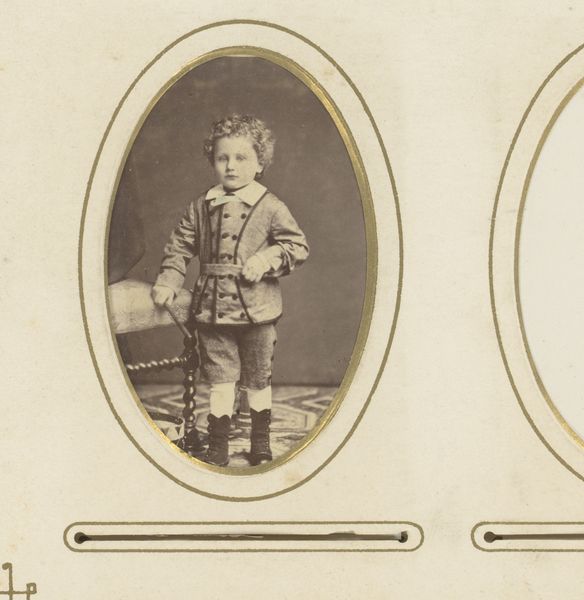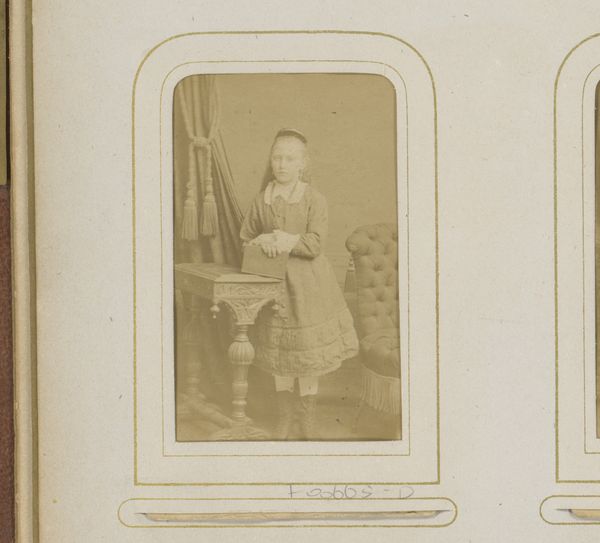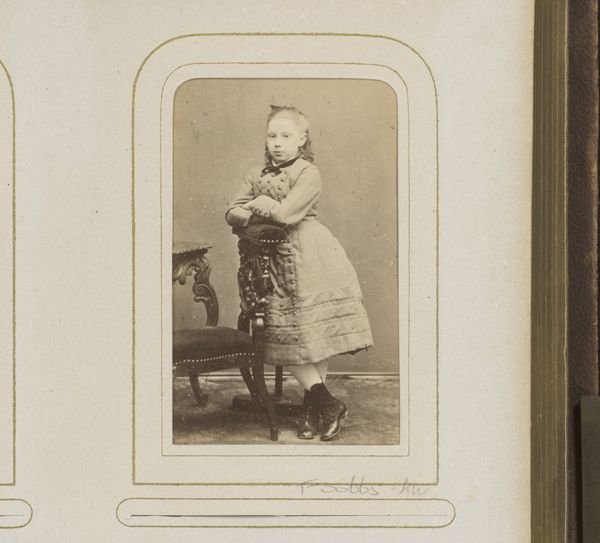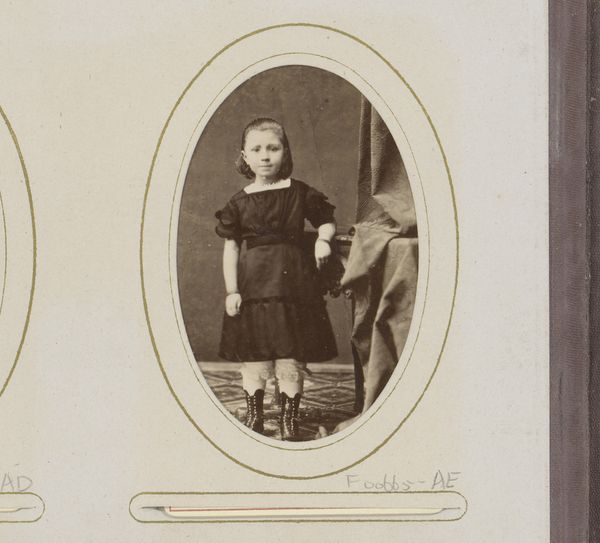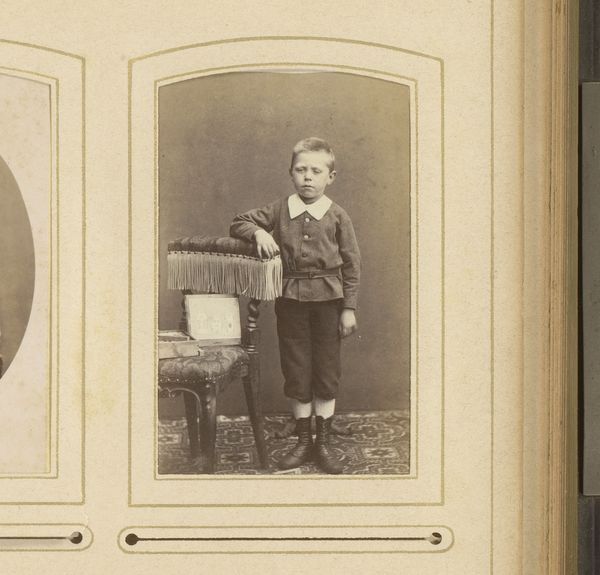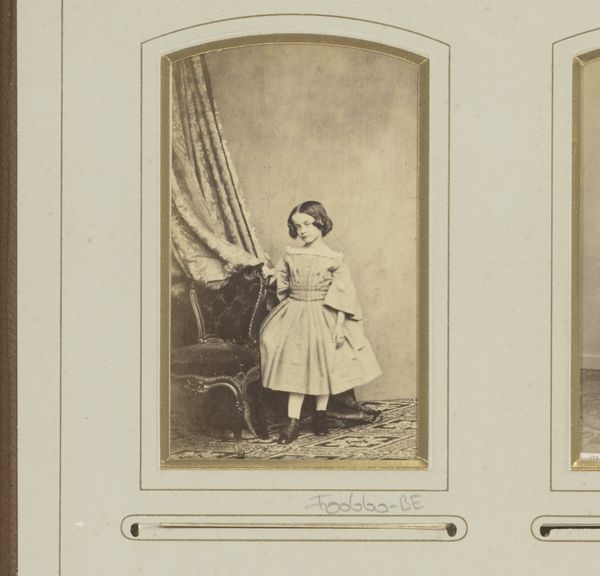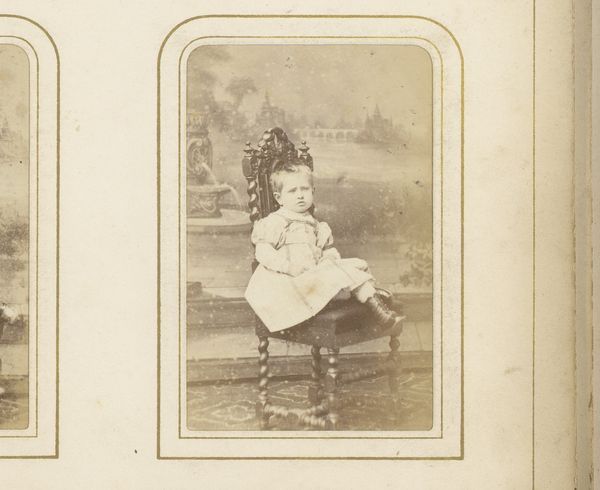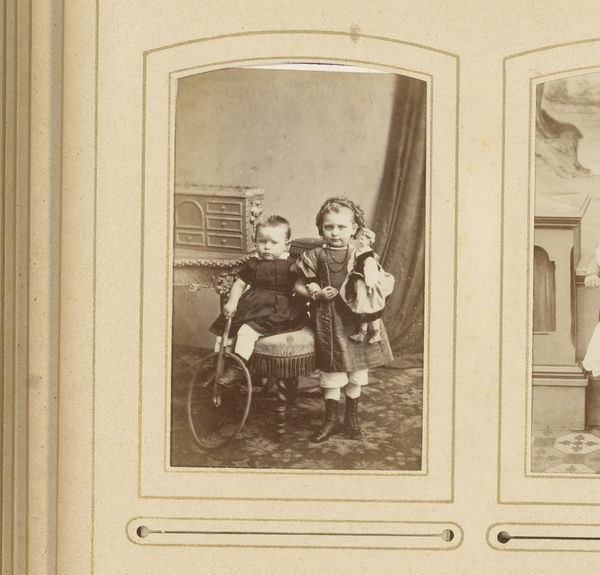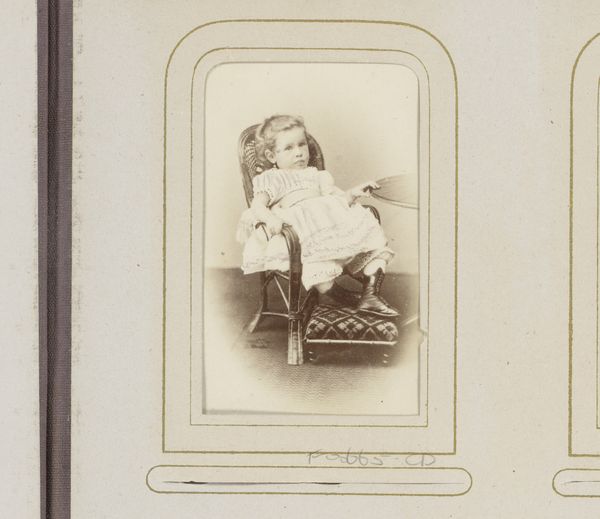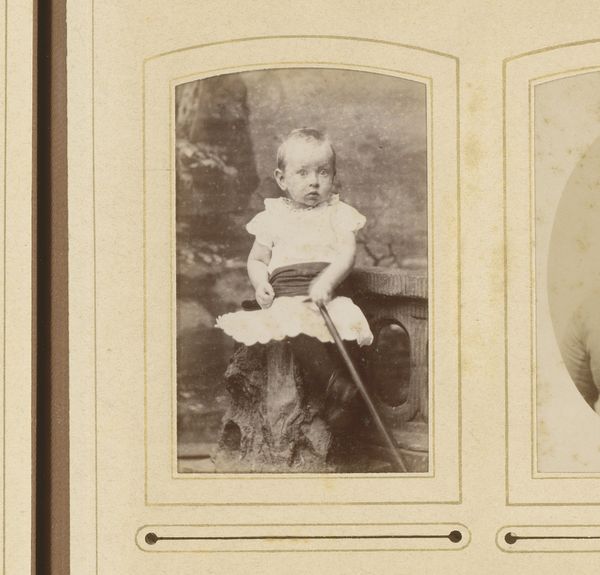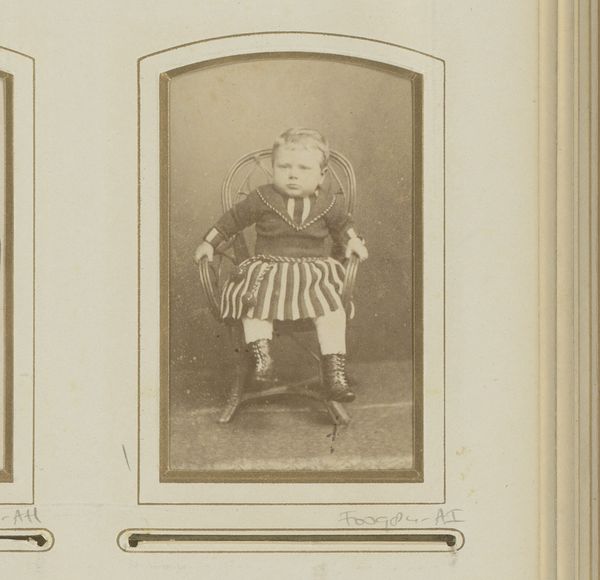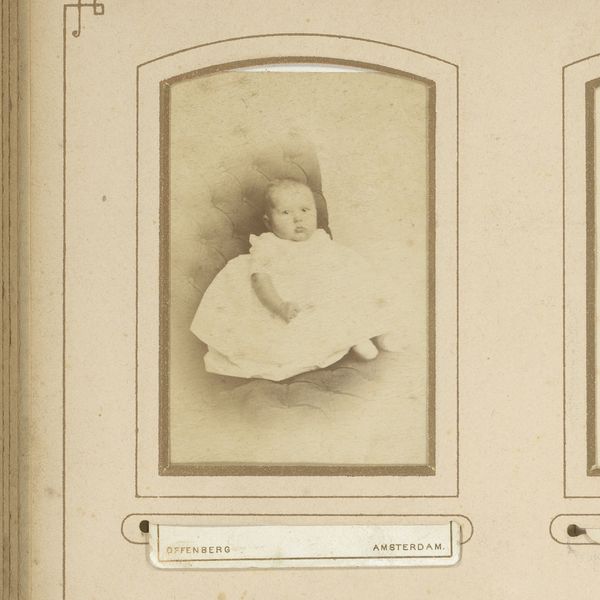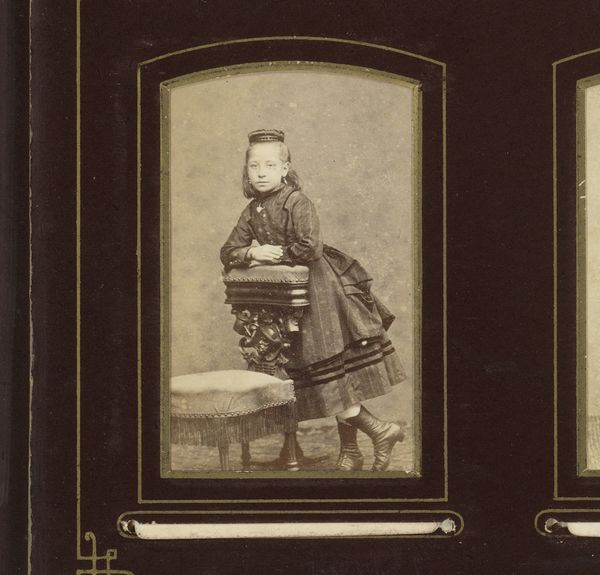
Dimensions: height 97 mm, width 59 mm
Copyright: Rijks Museum: Open Domain
Curator: This striking photograph, titled "Portret van een acteur in kostuum" or "Portrait of an Actor in Costume," was likely captured between 1855 and 1890 by J. Lundbergh. The details captured within this particular photographic print have truly endured through the ages! Editor: It certainly has a theatrical quality, almost like a character pulled straight from the stage! I wonder about the significance of the sheepskin vest, tall boots, and the oddly positioned drinking gourd, how do they play within cultural constructions of masculinity in the romanticist lens? Curator: A key point, right? When you consider the photograph, we must acknowledge the meticulous details of the studio's artifice. From the manufactured stone floor backdrop to the precise control over lighting and posing, every component was actively chosen to shape the representation of this actor and, subsequently, the persona they are portraying. I mean just think of the logistics needed in creating this set to enhance and facilitate the persona. Editor: True. Consider also the power dynamics embedded within the image. The carefully staged backdrop, the romanticised attire all work towards solidifying the power structures during that era. His gaze is direct, self-assured and reflects back at you an element of privilege through its carefully considered and highly constructed lens. Curator: But, it raises questions about craft and labour doesn’t it? Lundbergh had to develop negatives, mix chemical solutions, and control exposure times in the darkroom to create and manufacture it into the finished photographic object. A process dependent on many tangible materials and technical expertise! Editor: I am very aware of the effort and skills of the artisan. We must question and interrogate the photograph as a historical record reflecting identity, gender, and politics in performance culture. Curator: Food for thought. Photography is a tangible document. To really comprehend how photographic images like these impacted popular perceptions during the mid-19th century—or today even—requires us to look closely into the material history! Editor: Agreed! The dialogue between art and historical contexts provides a nuanced view on performance and its reflection in societal structures, then and now!
Comments
No comments
Be the first to comment and join the conversation on the ultimate creative platform.
